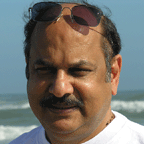 Rao Sahasmal established the town of Sirohi in 1425 AD. He was the direct descendent of the Deora-Chauhan dynasty that brought the end of the Parmars’ rule over this region. Dhumraja established the Parmar dynasty in 961 AD, over the area known as Arbudha, which included the present day District of Sirohi. Rao Lumba seized Mount Abu from the Parmar King in 1311 AD and established the Kingdom of Sirohi. Lumba ruled Sirohi till 1320 AD with Chandravati as the Capital of Sirohi Kingdom.
Rao Sahasmal established the town of Sirohi in 1425 AD. He was the direct descendent of the Deora-Chauhan dynasty that brought the end of the Parmars’ rule over this region. Dhumraja established the Parmar dynasty in 961 AD, over the area known as Arbudha, which included the present day District of Sirohi. Rao Lumba seized Mount Abu from the Parmar King in 1311 AD and established the Kingdom of Sirohi. Lumba ruled Sirohi till 1320 AD with Chandravati as the Capital of Sirohi Kingdom.
Rao Shiv Bhan popularly called ‘Sobha’, the sixth descendent of Rao Lumba, abandoned Chandravati and founded the new Capital, called Shivpuri in 1405 AD. Rao Sahasmal was the son of Rao Sobha Ji. Sahasmal also laid the foundation of the Sirohi Fort in 1425 AD. He moved his Capital from Shivpuri to Sirohi. Shivpuri today lies in ruins.
During the reign of Rao Sahasmal, Rana Kumbha of Mewar attacked and conquered Mount Abu. Rana Kumbha established the Fort of Achalgarh in the year 1452 AD. Rao Lakha succeeded Rao Sahasmal as the ruler of Sirohi and tried to liberate Mount Abu with the help of Qutbuddin Ahmed Shah II, the King of Gujarat. Lakha failed to get his territory back. His son, Rao Jagmal finally married into Sisodias and got back Mount Abu in 1457AD.
The cozy relationship with Udaipur (Sisodias) ended after the death of Maharao Man Singhji II in 1572 AD. The death of the ruler of Sirohi and his son thereafter, resulted in a power vacuum. The chosen successor, Maharao Surtan (1572 AD – 1610 AD, was not acceptable by some of his own clansmen. By the time Surtan died, he had fought fifty two battles and lost each and every one. The next two hundred years saw Sirohi largely in decline.
In 1808 AD, Maharaja Man Singh of Jodhpur seized the ruler of Sirohi, Maharao Udai Bhan, while he was returning home after his father’s funeral. Jodhpur demanded a huge ransom in exchange for Maharao’s return. The ransom was paid and that meant raising taxes on the population. This strange incident crippled the economy of Sirohi Kingdom. The nobles rebelled against Udai Bhan and appointed his younger brother, Sheo Singh, to assume the reigns of the government in 1817 AD. The British had arrived by then. Maharao Sheo Singh ruled till 1846 AD under their protection.
 Rao Sahasmal established the town of
Rao Sahasmal established the town of 

2 Comments:
Dear Guptaji,
I saw your photo albums on Flickr and must congratulate on capturing the soul of each place. I will be visiting Mount Abu sometime in next few days. I read somewhere that photography is not allowed at the Dilwara Temples. Is it true? Which other monuments/sites at Mount Abu are "no photography"?
I would like to ask some more. Maybe through email. My contact is gurdas@gurdas.com
Thanks!
Your information is correct, photography is not allowed inside Dilwara Temple. To the best of our knowledge, you can photograph every thing else in Mount Abu.
Post a Comment
<< Home